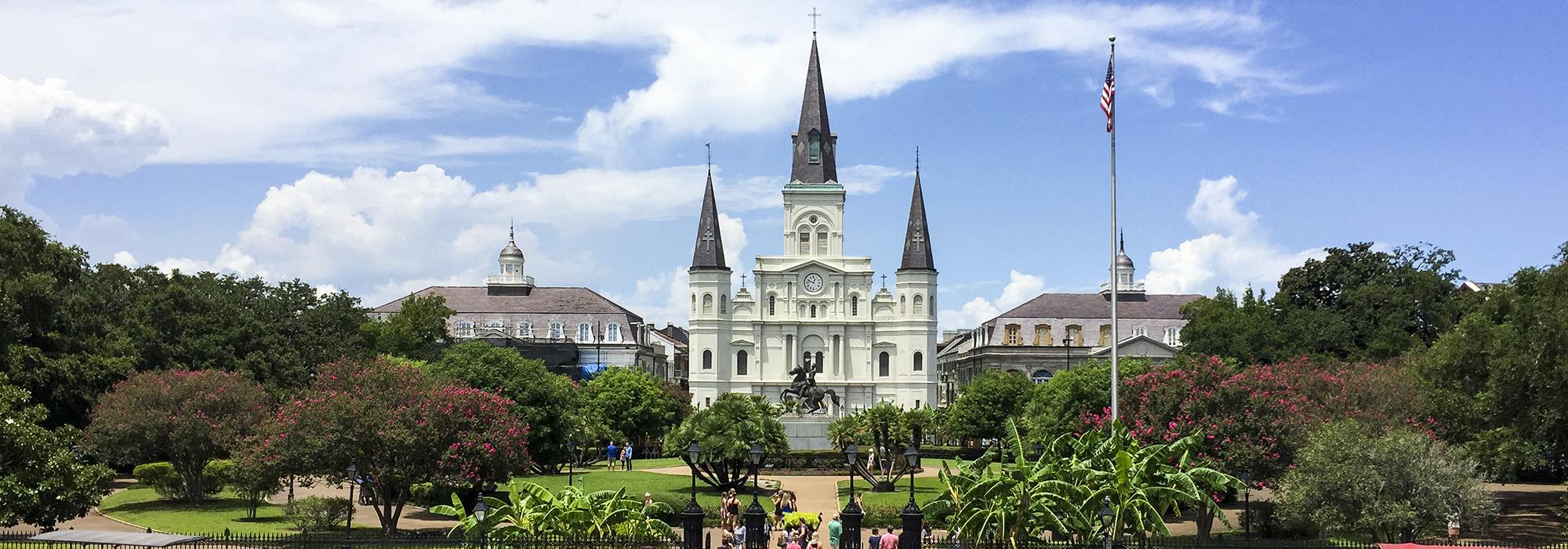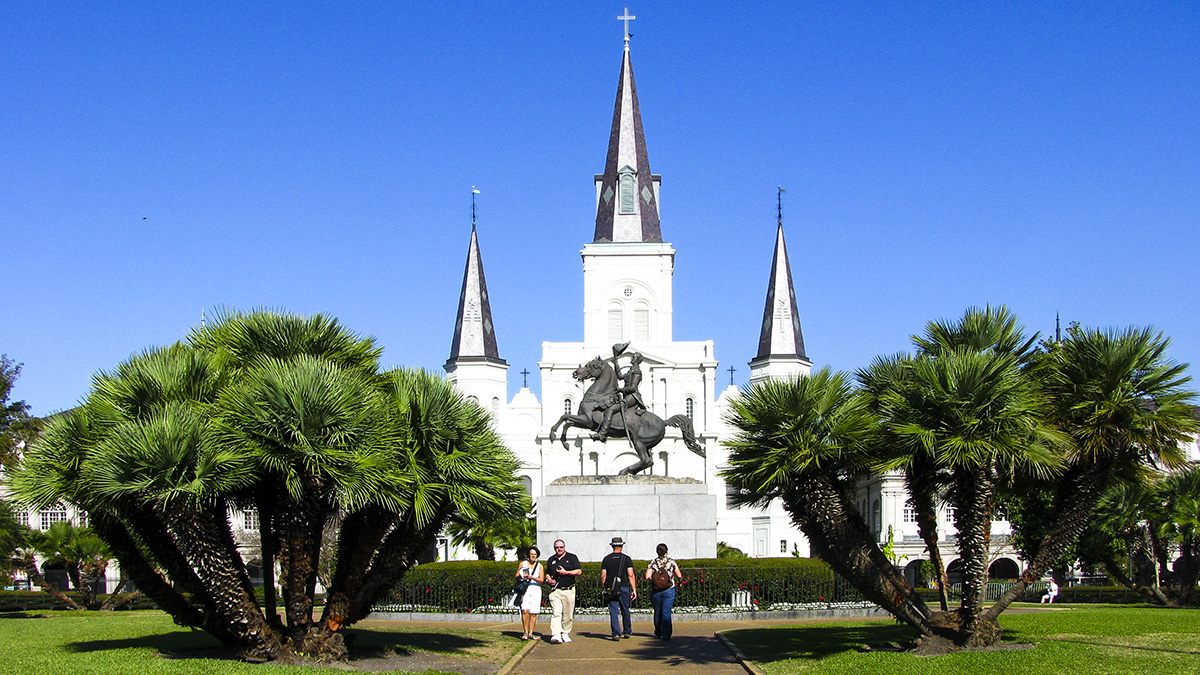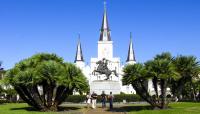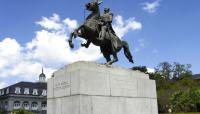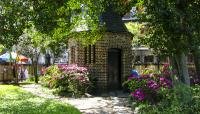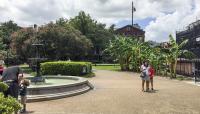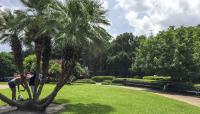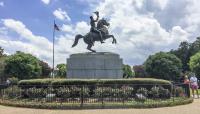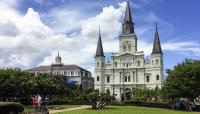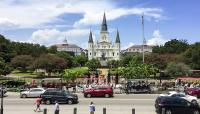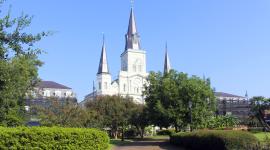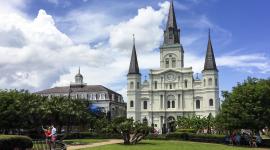Landscape Information
Originally intended as a military parade ground and known as the Place d’Armes, this 2.5-acre public square occupied the heart of the original French colony of Nouvelle-Orléans, as was laid out by engineer Pierre Le Blond de la Tour and his assistant Adrien de Pauger in 1721. The St. Louis Cathedral, flanked by the Cabildo and the Presbytère Museums, is located along the northwestern edge of the square. Commercial buildings arose on the upriver and downriver sides of the square, with its southeastern edge left open to views of the nearby Mississippi River. During the first half of the nineteenth century, the simple, open field, crossed by diagonal paths, was planted with rows of sycamores and enclosed by a fence. A central fountain was installed in 1836.
Under the supervision of city surveyor Louis H. Pilié, the square was renovated and (in 1851) renamed in honor of General Andrew Jackson. Grass was planted along with hundreds of trees and shrubs; a new fence (designed by Pilié) was installed; marble statues of the Four Seasons were erected; and the sycamores were removed, as was the fountain, which was placed to the rear of the cathedral. In 1856, the equestrian statue of Jackson, by Clark Mills, was unveiled at the center of the square. Photographs from the 1860s confirm the general design that prevails today: concentric, curvilinear walkways around the central Jackson statue, with an inner, oval lawn divided into four grassy quadrants by cross-axial paths, all set within a tree-lined perimeter. Jackson Square was designated a National Historic Landmark in 1966.



